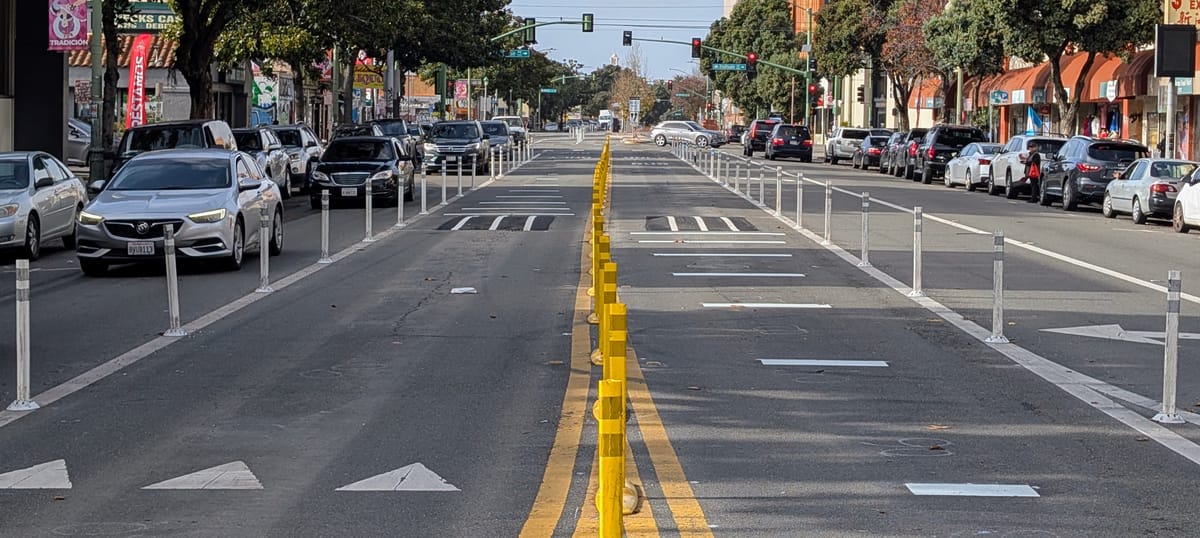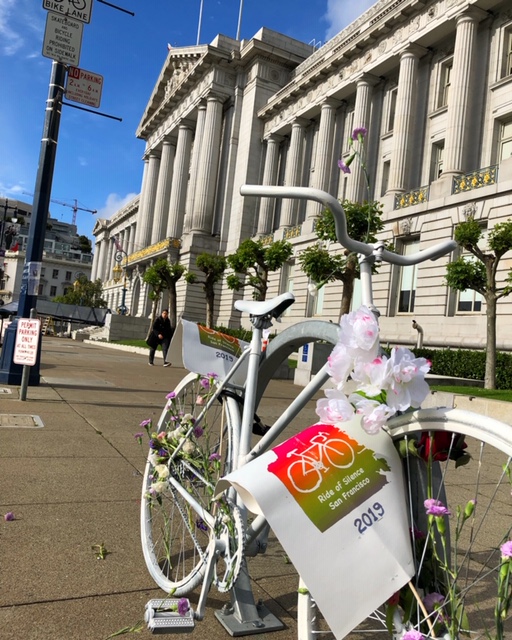 Green Wave in Copenhagen
Green Wave in CopenhagenValencia Street is one of the most heavily biked corridors in San Francisco but its current traffic signals are timed at an auto-only capable speed of 25 mph, leaving bike riders stymied at intersections, or gasping for breath after a mad 15-block sprint. Unfortunately, most riders choose the third option of running red lights, putting not only themselves at risk of being hit, but also endangering pedestrians crossing the street.
Ideally, timing should weigh in favor of actions that have the least impact on the environment and provide the most safety for all users. Not surprisingly, this ideology has been embraced by Amsterdam, Copenhagen and Odense in Denmark. In these cities, on key bicycle corridors traffic lights have been retimed for bicycle speeds, otherwise known as a Green Wave.
Retiming traffic lights on Valencia Street to an average bicycle pace would not only preserve cyclists’ momentum and energy, it would also make the streets safer for all road users. Slowing traffic to under 14 mph exponentially decreases the severity of all crashes. Furthermore, when motor vehicle traffic is traveling at the same speeds as cyclists, it is safer for cyclists to “take the lane” when there are obstacles in bike lanes, and it may also decrease right hook crashes.
While naysayers may object that this will increase traffic congestion, it is more than reasonable to counter that real-time traffic conditions on Valencia Street have already slowed to a general range of 8 to 20 mph. It makes logical sense that retiming traffic signals for actual traffic speeds would increase traffic flow, reduce idling, and minimize stop-and-go movements, thus decreasing pollution.

Portland, Oregon has already realized this and implemented a citywide traffic signal optimization project, which saves motorists over 1,750,000 gallons of gas and 15,460 tons of CO2 each year. It cost $533,000, which was paid for by the Climate Trust of Oregon carbon offset program. In downtown Portland nearly every street is timed for 12 mph, making these streets de facto Green Waves.
When I proposed a Green Wave on Valencia to the San Francisco Municipal Transportation Agency (SFMTA) they conducted a series of traffic models in October 2008. The results confirmed that synchronizing traffic signals for 12 mph would decrease actual travel times during peak car commute periods by as much as 3 ½ minutes.
Despite these obvious benefits for all modes of transportation, one of the nation's most biked cities, San Francisco, has failed to move beyond simple traffic modeling. Even with recommendations from its own traffic planners, the SFMTA has insisted it does not have the funds to begin even a pilot study on Valencia Street, ignoring hard evidence of success from cities in the US and abroad.
This Streetfilm interview with cyclists on Valencia Street shows how Green Wave would benefit all street users.
Photos: zakkaliciousness on Flickr and fietsberaad.nl




